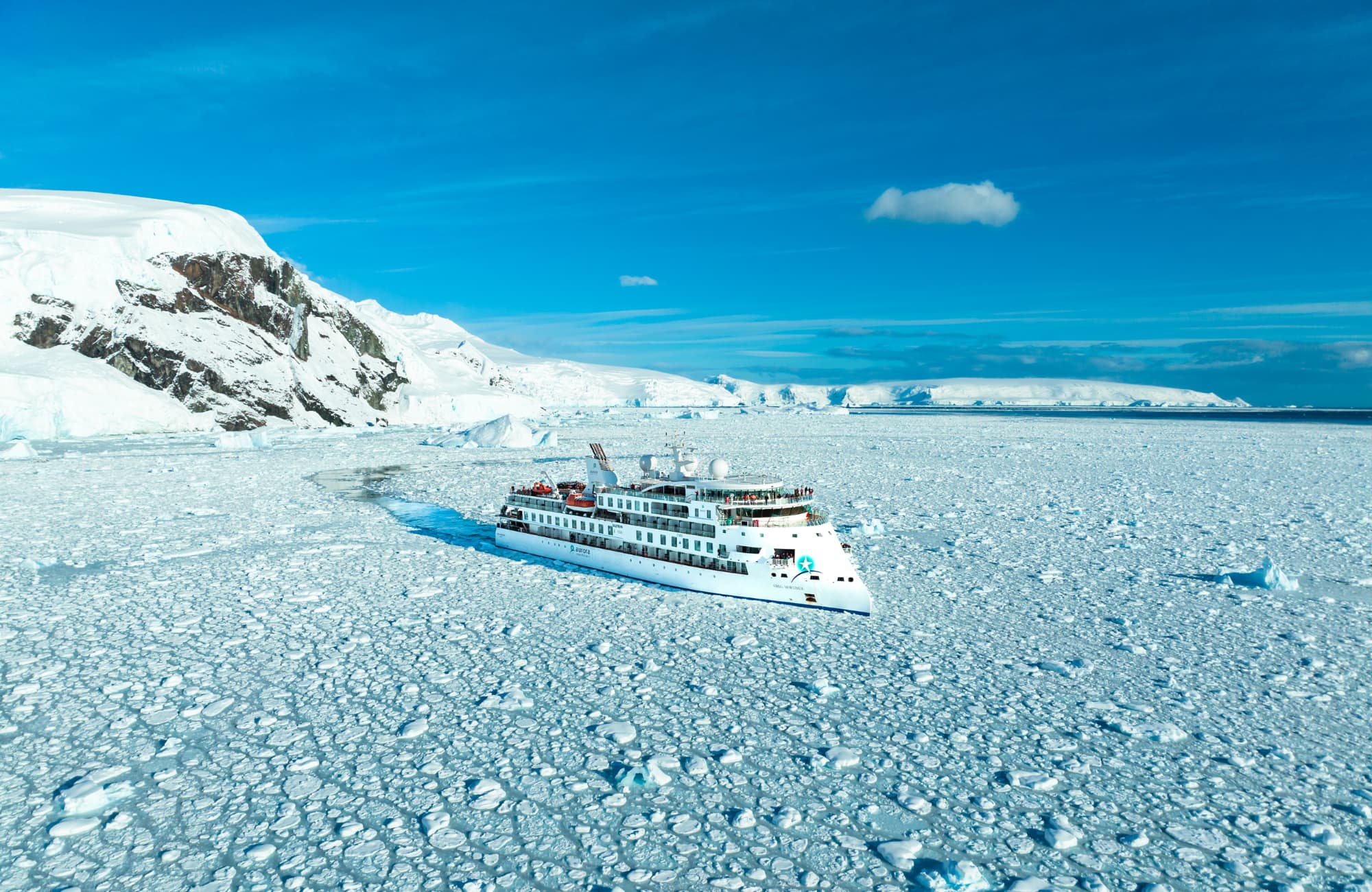It’s pretty difficult not to have a life-changing trip to Antarctica, no matter which ship or itinerary you choose. But on a voyage with Aurora Expeditions, I discover that small-ship cruising in the White Continent has the ultimate edge. Here’s why.
Passengers get to spend more time off the ship

The minute I set foot on the icy shores of Antarctica, time seems to speed up. Hours whiz by in minutes as I slowly wander along volcanic beaches dotted with penguins, seals and seabirds, taking it all in. Had I travelled on a bigger ship, I’d likely miss some of these mesmerising moments while waiting my turn due to local regulations allowing just 100 passengers on land at any one time, per ship. Aurora Expeditions ships carry approximately 132 passengers in polar regions, but with around two dozen fellow expeditioners opting to partake in optional activities such as snorkelling and kayaking when we anchor, no one misses out on a minute of off-ship fun.

Small-ship passengers don’t just enjoy more time on land, but potentially, a greater variety of landings. After crossing the notorious Drake Passage, small-ship expeditions typically make two landings (where possible) per day. Because it takes longer for larger vessels to coordinate landings, this may reduce the frequency of landings on the itinerary.
The intimacy of small ships elevates the experience

Shared experiences bring people together, and small-ship expeditions to Antarctica allow passengers to share just about every moment outside their cabins, helping foster a wonderful sense of camaraderie onboard. After a busy day off the ship, I relish the opportunity to compare notes with fellow passengers and passionate expedition team members over drinks and dinner.
From a practical point of view, it’s also much easier to move around a small ship. This is particularly important on an expedition to Antarctica, when rarely a moment passes when there’s not something going on, whether it’s a pod of orcas rounding the bow, or a riveting talk on penguin breeding habits being presented in the lecture theatre.
Small ships can go more places

I quickly learn on my first cruise to Antarctica that itineraries are more like a guide; the daily plan is heavily influenced by the ever-changing weather. A bonus of visiting on a small ship is that they’re more manoeuvrable, giving the captain greater flexibility to navigate shallow bays, narrow channels and icy patches in order to give passengers the best experience.
Small-ship expeditions are kinder to the planet


While small doesn’t automatically mean more sustainable, there’s no denying that small expedition vessels burn less carbon than large ships, which has become more critical than ever following a recent study finding that black carbon from fossil fuel and biomass combustion darkens snow and makes it melt sooner.
Small-ship operators also tend to be more engaged in sustainable innovation. Aurora Expeditions’ ships, for example, have an X-BOW® design that helps to reduce fuel consumption. It also helps keep the ship stable, giving seasick-prone passengers (like me) more opportunities to make a small but meaningful contribution to Antarctica’s protection by getting involved in the handful of citizen science projects supported onboard. Who knew counting divebombing seabirds could also be so much fun?
Aurora Expeditions’ small ships are designed for adventure and their itineraries maximize your time off-ship to explore and connect with remarkable destinations. Aurora offers the most comprehensive activity program, supported by an experienced Expedition Team. Some activities are included in an expedition like Zodiac cruises and short hikes, while other like snorkelling, sea kayaking and skiing are optional and cost extra.



